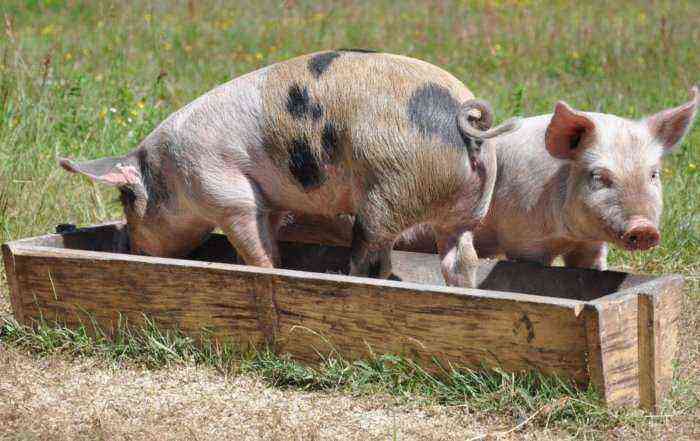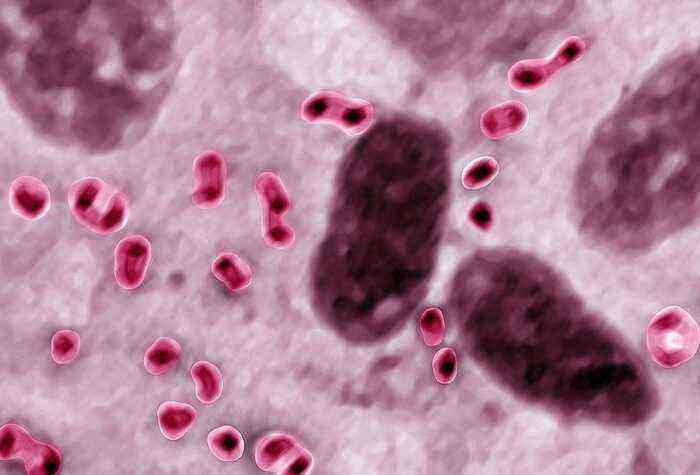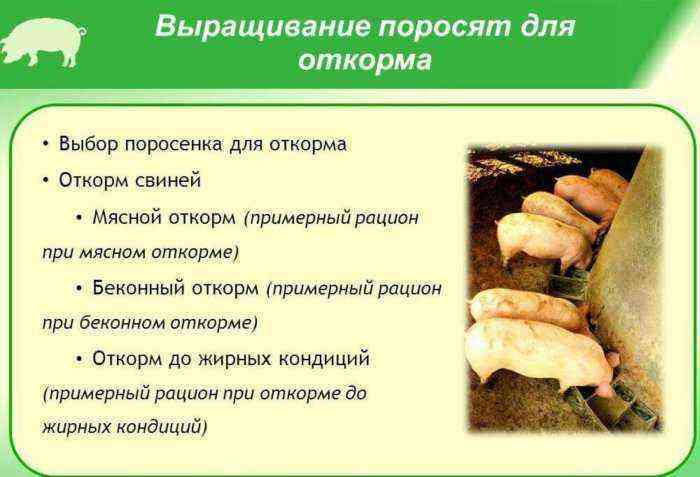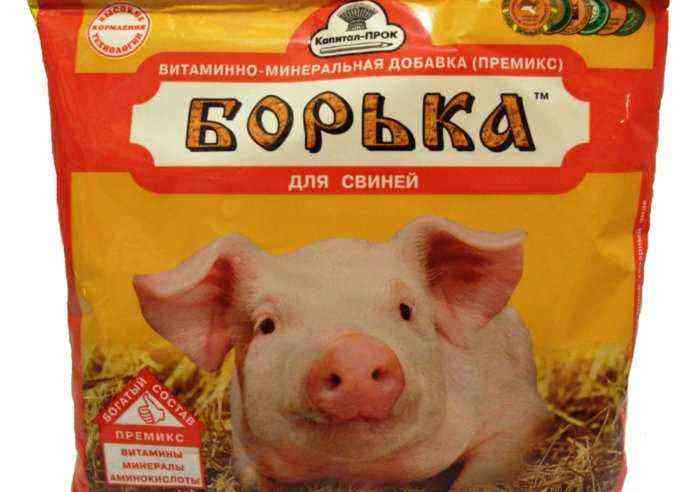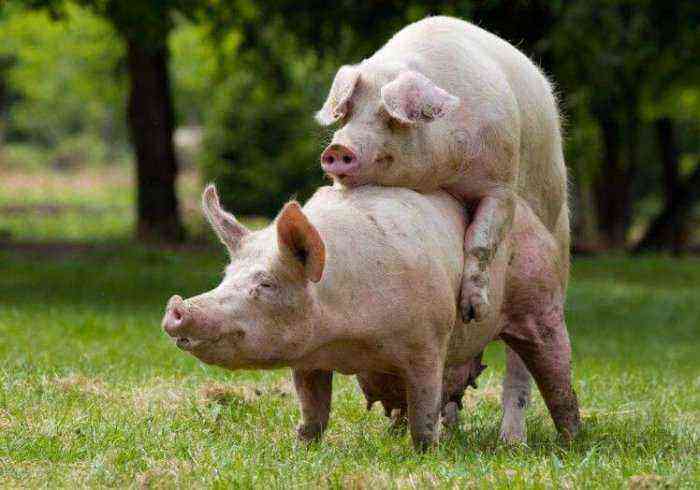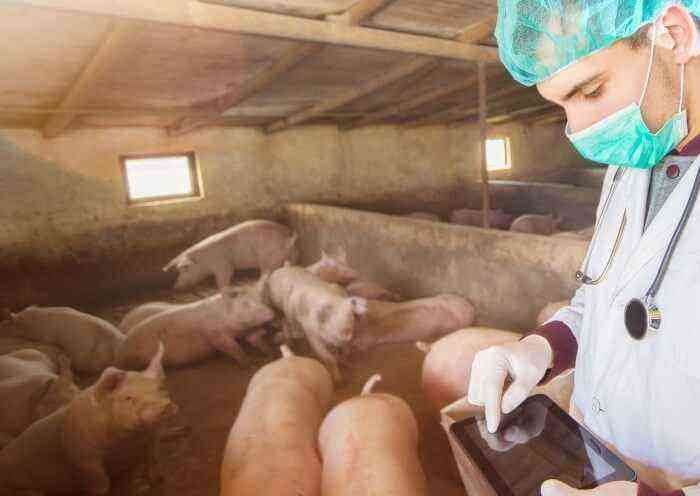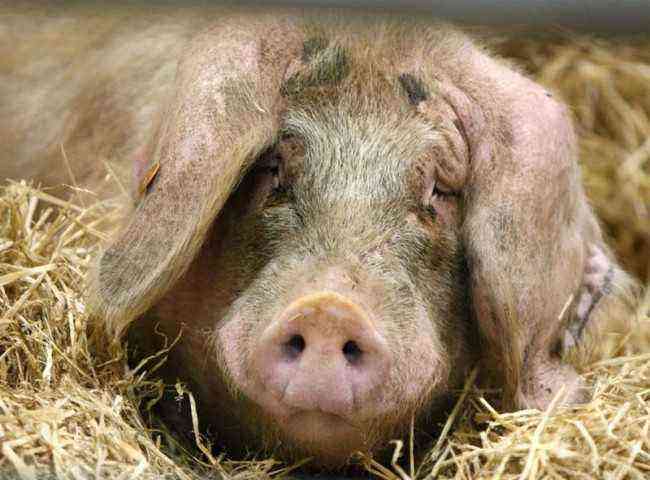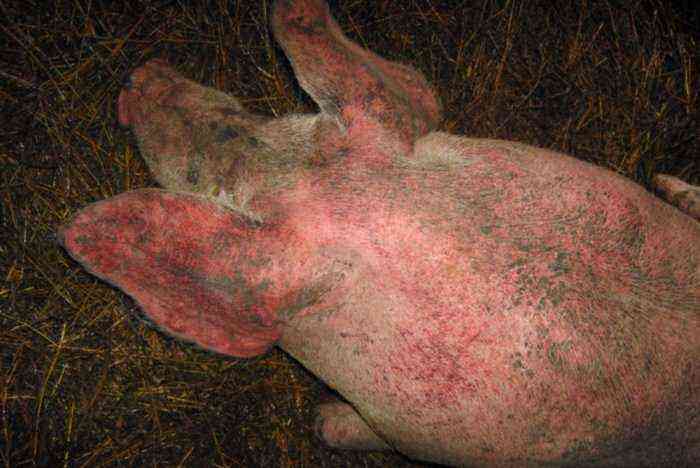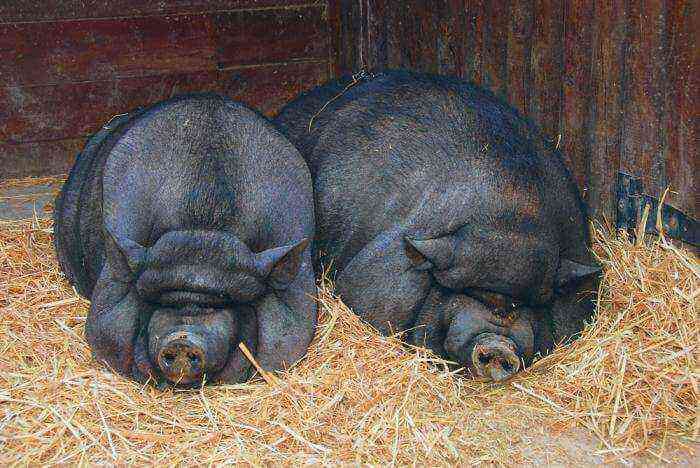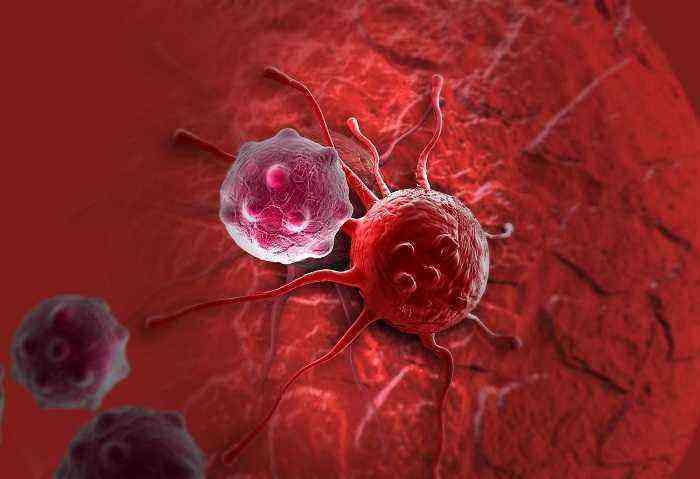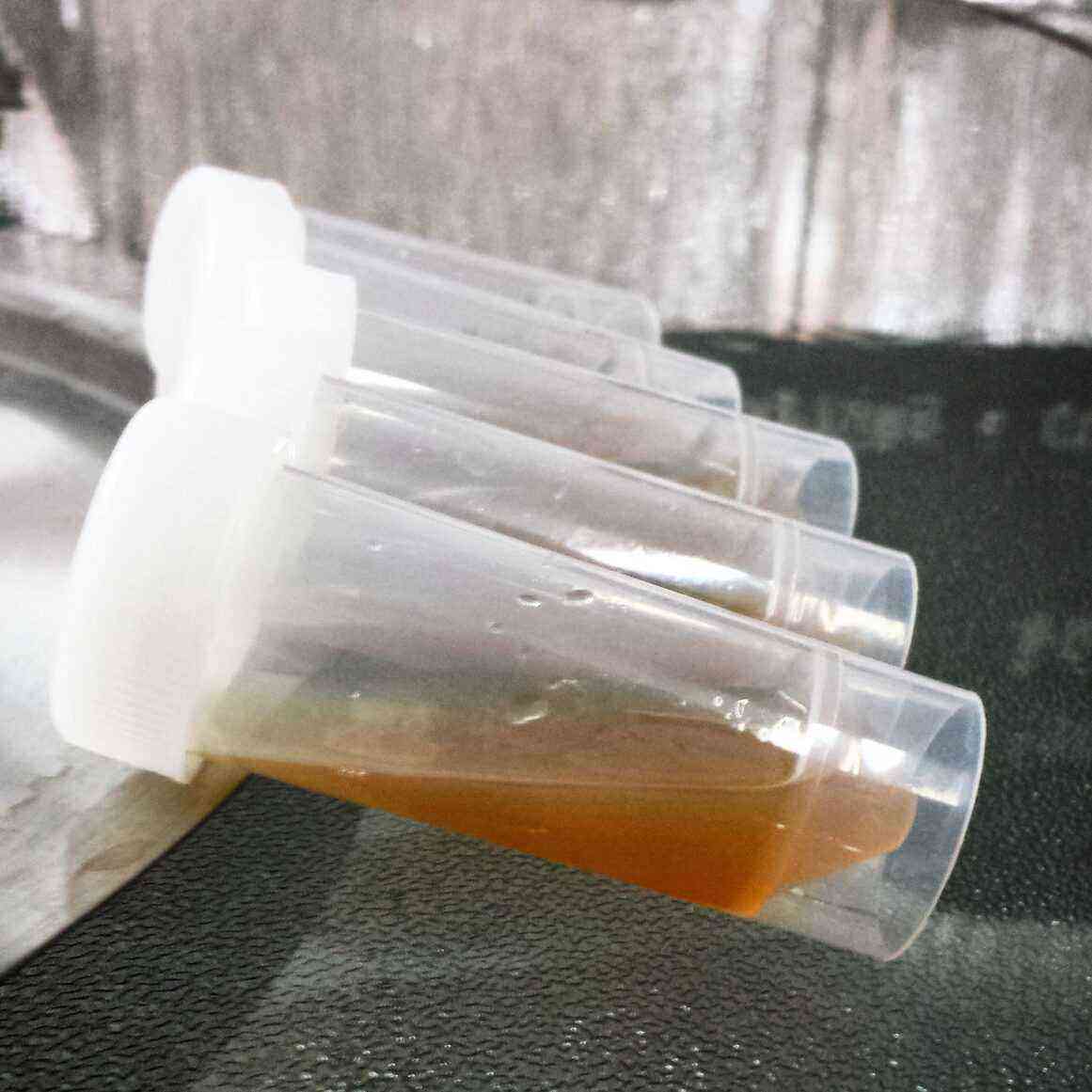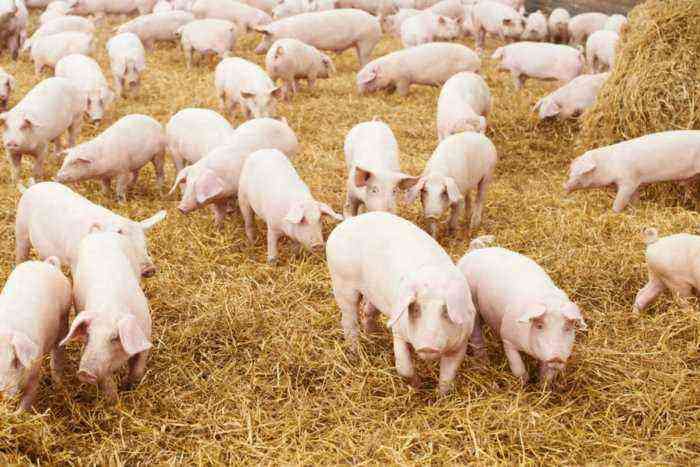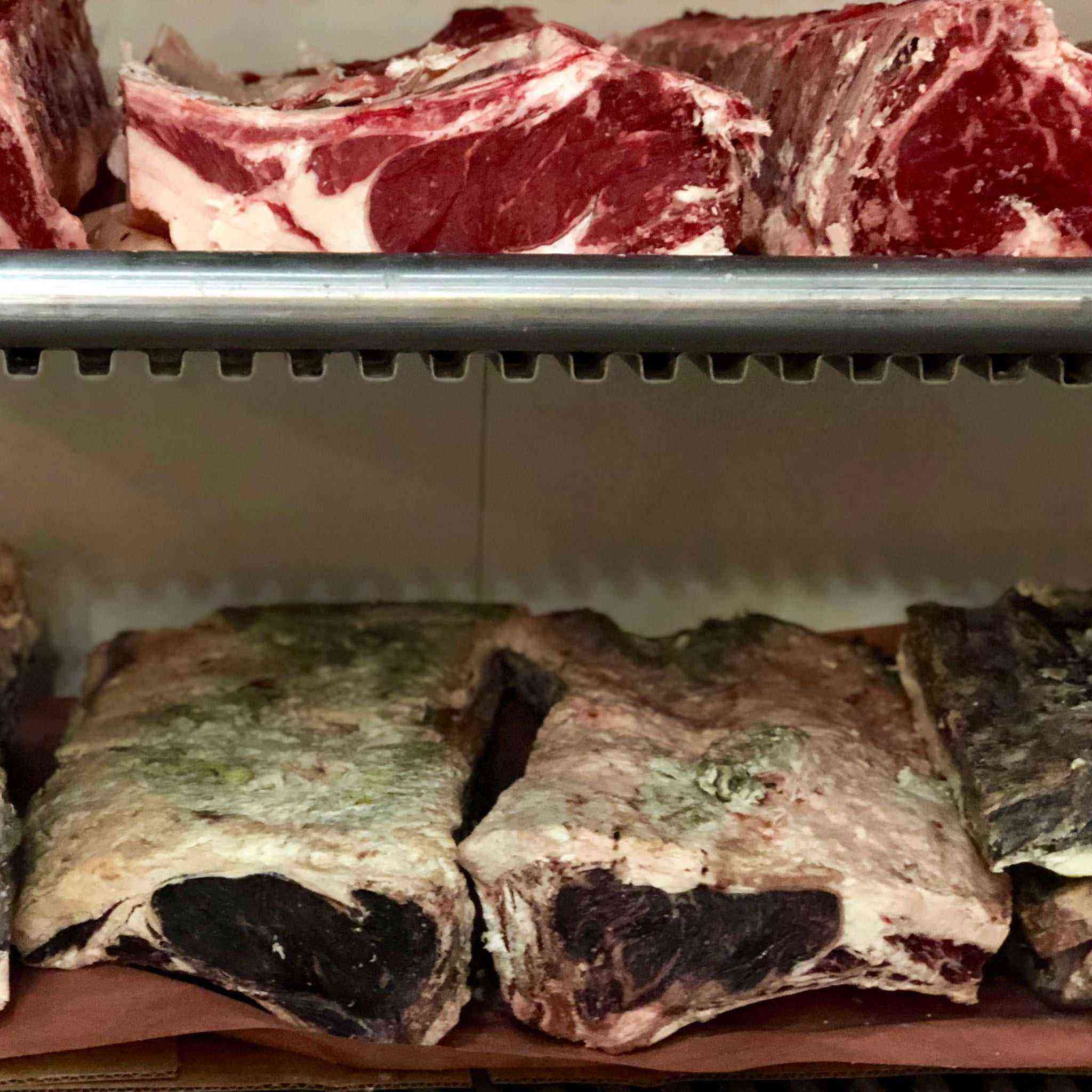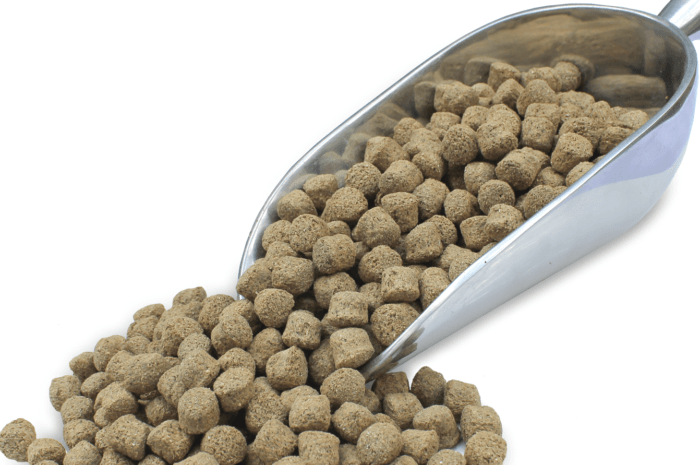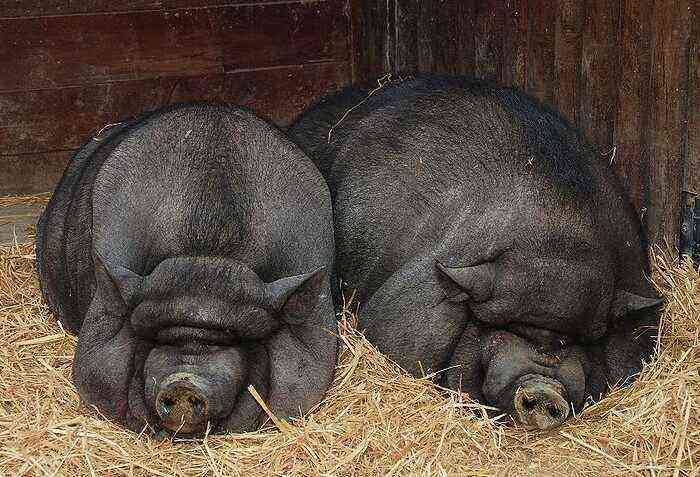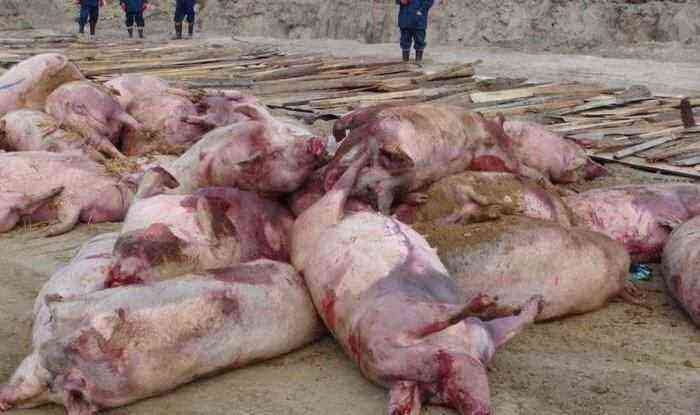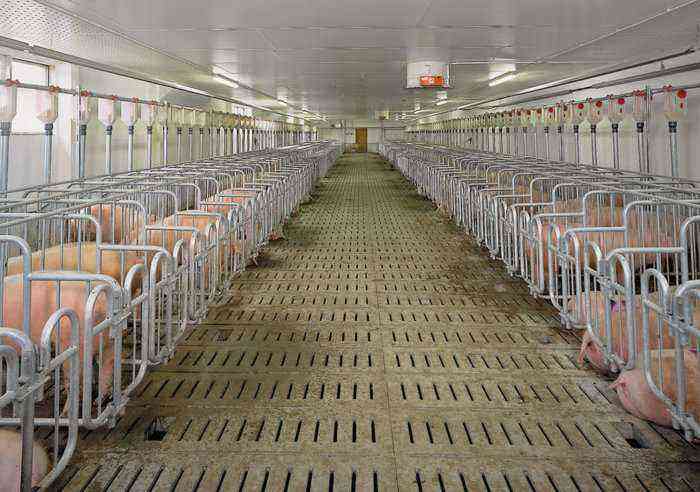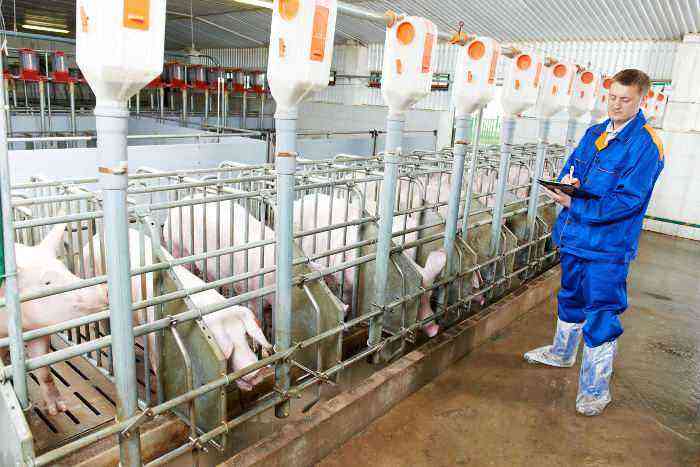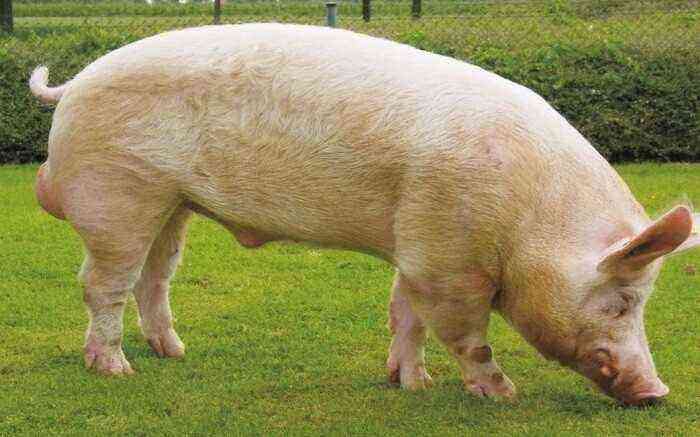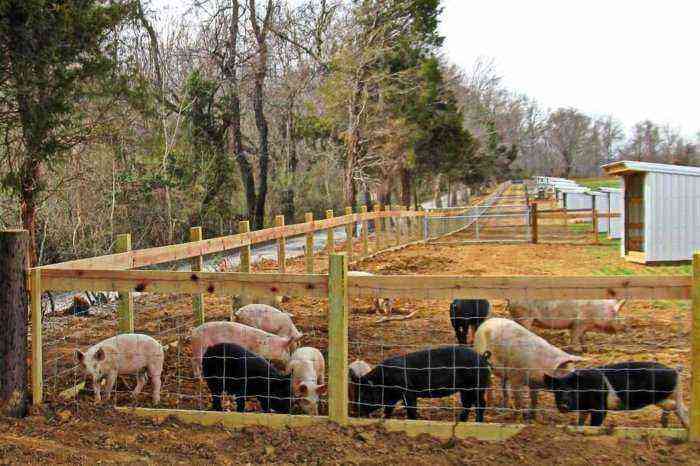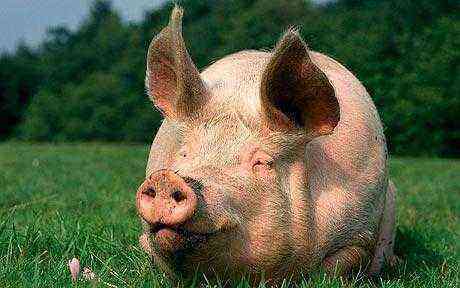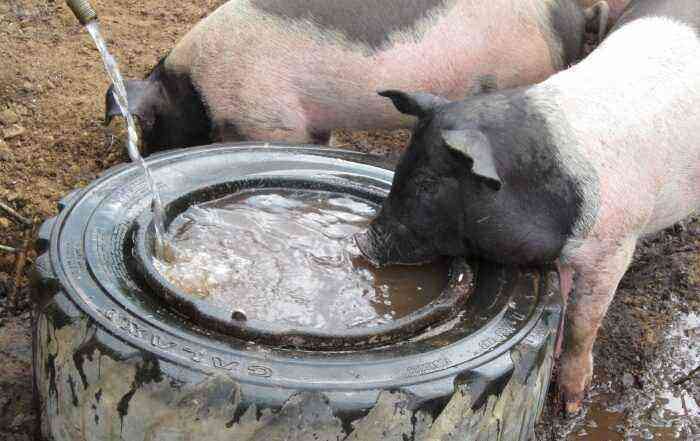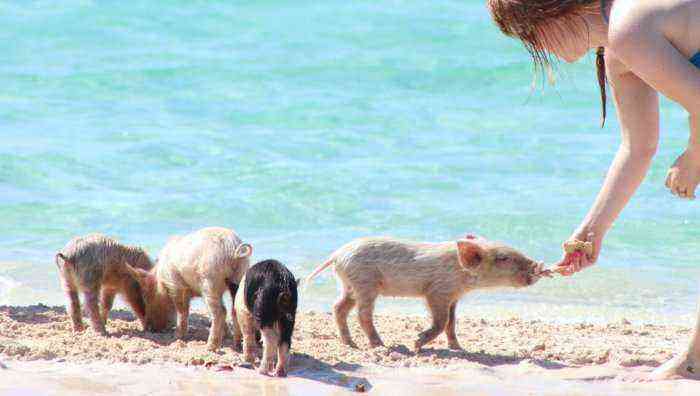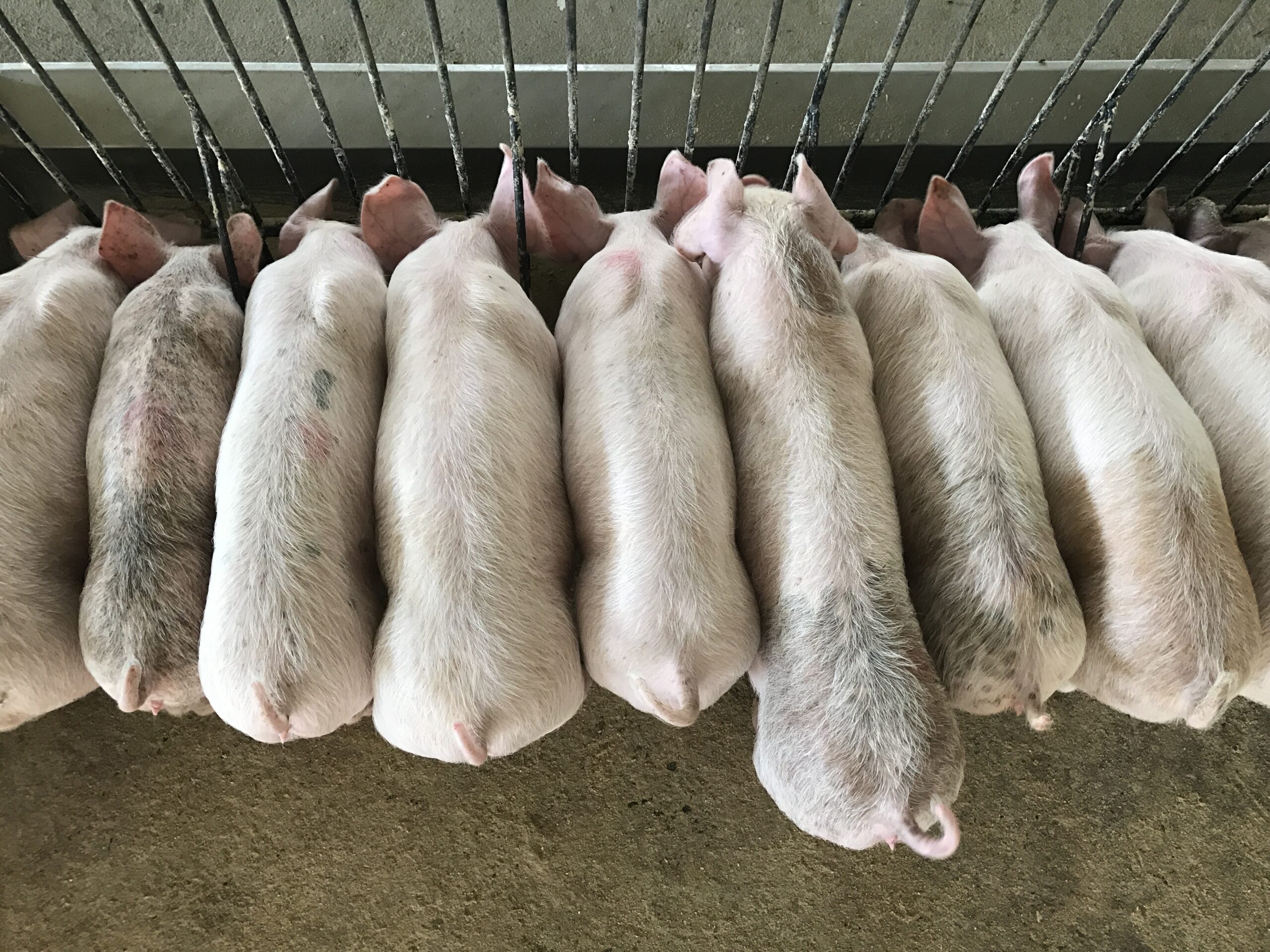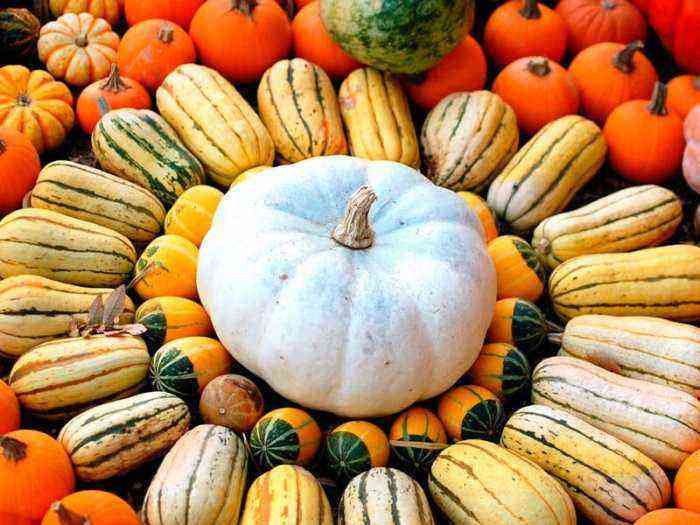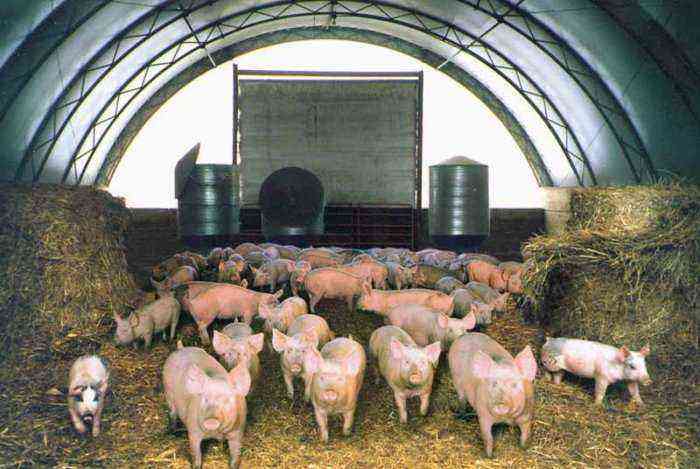Among the various European native varieties of artiodactyl pigs, the Hungarian Mangalica stands out the most. This animal was on the verge of extinction for a long time, but the breed line was nevertheless restored, and curly pigs are still raised by farmers from all over Europe.
Pigs Mangalitsa
History of the origin of the breed
The first piglets of the Hungarian mangalica were born in the 1830th century, or rather, in 1860. The leading role in their breeding belongs to Archduke Joseph. It was he who, by crossing domestic Carpathian and semi-wild pigs from Serbia, managed to get a completely new pedigree line of greasy direction. In the future, Hungarian breeders continued to improve the quality of the animal, and finally the brazier breed was formed by XNUMX.
The local population liked the new variety of pigs. When slaughtered, it was possible to get tender marbled pork, as well as a large amount of fat. And since products with a high fat content were especially valued at that time, mangalic meat was the most popular in all markets of the country. Accordingly, the number of animals grew, which reached 30 thousand heads.
But by the middle of the XNUMXth century, lean pork became more popular, which caused the almost complete disappearance of the brazier population in the country. It was restored by the end of the century, which was facilitated by Spanish companies that widely used mangalitsa meat for the production of jamon and lomo.
Reference. To date, the breed is distributed throughout Hungary, it is also bred in the UK and Ukraine. In Russia, representatives of the pedigree line can be found extremely rarely.
Description and characteristics of the breed
The Hungarian downy mangalica has quite a few different names. It also includes several varieties. But, despite this, the general features of the exterior and productivity are similar for all of them.
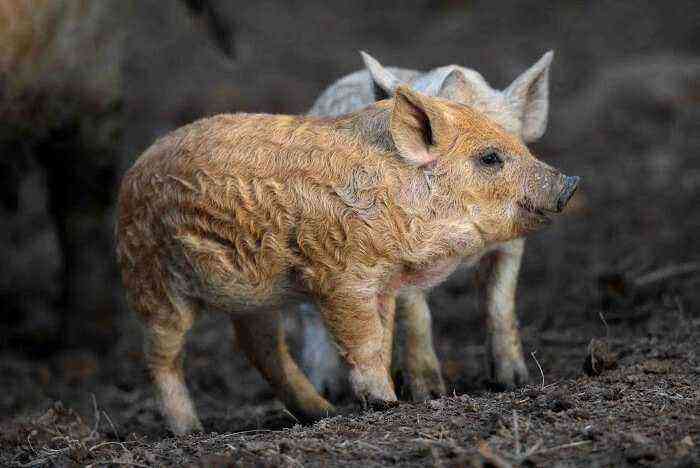
Hungarian downy mangalica
According to the type of productivity of pigs, braziers belong to the meat and lard direction. Therefore, the main features of their physique are corresponding:
- small sizes;
- a downed body with strong bones;
- large, slightly sagging belly;
- straight or slightly arched back;
- short strong limbs;
- wide and deep chest.
But still, the main feature that distinguishes Hungarian pigs from other breeds is their long curly hair. In appearance, such animals are more like sheep than pigs. Their coat is long and curly. Closer to the body, the second type of bristles grows – a soft swelling that protects from cold, snow and wind.
Color can be of four types:
- white;
- the black;
- red;
- motley.
The first option is the most common. Of the entire existing population of such artiodactyls, whites make up 80%.
Productivity
The average weight of sows of this variety ranges from 160 to 200 kg. Boars grow large and easily reach 300 kg of weight. The growth rate for piglets is 0,7 kg per day. For six months, piglets grow up to 70 kg.
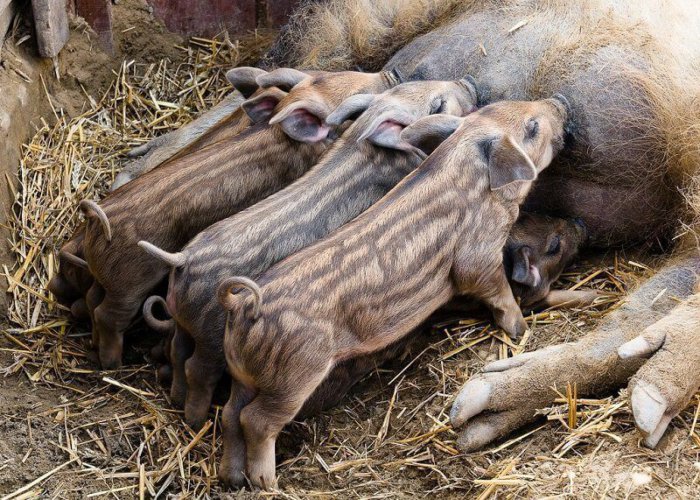
Hungarian mangalica feeds piglets
The meat and fat of this variety of pigs is valued for its delicate texture and high palatability. The thickness of the fat of animals reaches 6,5 cm. The meat products of the grills are used to prepare the world-famous dish – jamon, as well as for the production of sausages and other meat delicacies.
Varieties of the breed
As already noted, depending on the color of the coat, the entire pedigree line of mangalits is divided into several subspecies. Moreover, it directly depends on what color is inherent in the animal, whether it is allowed for breeding work or not. To maintain the purity of the breed, only four basic colors of pigs are used in breeding.
White mangalicas
The predominant part of the population of Hungarian pigs (approximately 80%) has this color. Breeders can observe both pure white specimens and individuals with various shades. Most often it is pale yellow or light gray.
The dark skin on the patch and around the eyes contrasts with the white color. The curly-haired light pig is most popular in purebred breeding.
Red and black mangalicas
The breeder managed to get the red suit by crossing ordinary white mangalits with another local breed. But the unique bristle color is not the only feature of the breed. Shaggy red pigs suggest more intensive daily gains in young animals, as a result of which the total weight of an adult is slightly above the standard. In general, the color can also vary from red to dark brown.
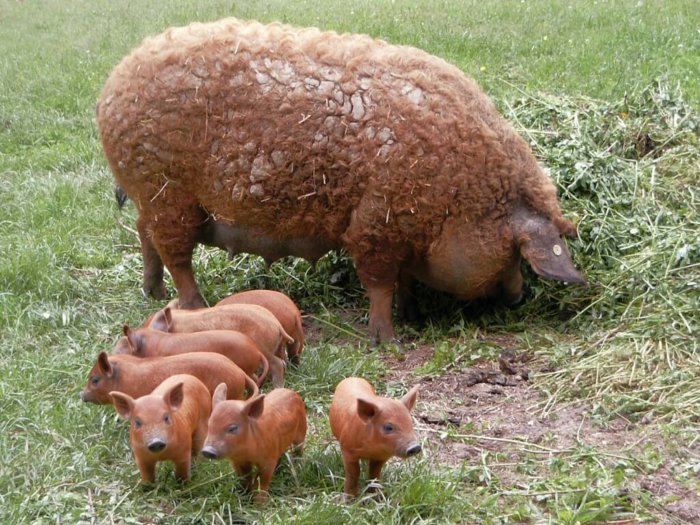
Red mangalicas
The black variety has larger sizes. However, both subspecies are extremely rare. They are bred in Hungary exclusively in state farms. And the sale of livestock with such colors to private farms is prohibited by law.
Swallow
Breeders managed to obtain such a suit by combining the breeding material of the white subspecies with animals of the Sirmium breed. This made it possible to diversify the colors of living creatures, as well as significantly improve the constitution and increase the size of the piglets. But over the XNUMXth century, these qualities were gradually lost, and today the barbecue-swallows do not differ in size from the standard.
Animals with this coloration have shorter hair. On the back, as well as on the sides, it is completely black. The belly, the inner side of the limbs and the neck are covered with white, red or light gray bristles.
Maintenance and care
In terms of care, the hairy Hungarian pig is quite unpretentious. A thick layer of wool and undercoat perfectly protect it from cold and precipitation. But still, certain rules should be observed when keeping such animals. And above all, it concerns the way of keeping living creatures.
For breeding mangalits, an open scheme for raising animals is most often used. All livestock are kept year-round in open pens and graze on specially designated pastures. Grazing can be carried out in meadow areas or in the forest.
Of course, a closed method of keeping is also suitable for breeding such artiodactyls, which involves year-round living in designated pigsties. But this method has several significant disadvantages:
- to ensure health and good growth, a special diet is needed, which is quite expensive to pick up even on an industrial scale;
- animals require constant walking, otherwise they quickly become overgrown with excess fat, which also negatively affects the quality of meat;
- closed content leads to frequent molting and the complete disappearance of bristles from the body.
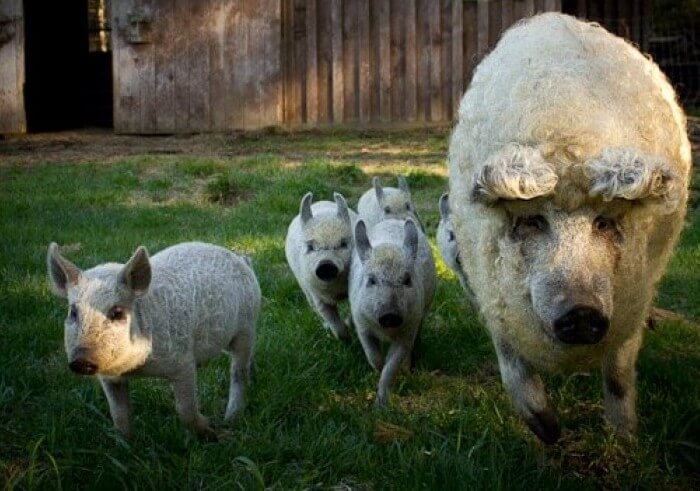
Mangalitsa on pasture
A more suitable scheme for growing barbecues is mixed. It involves keeping the herd indoors only during the cold season. With the advent of the first grass, all livestock are released into open pens and pastures.
They contain such pigs in compliance with the following points in care:
- the ground in the corral or the floor in the room is covered with thick bedding;
- straw or sawdust is changed twice a week (minimum);
- the walking area is fenced with a reliable parkan or fence;
- in winter, a large haystack is installed in the corral, in which animals can hide;
- in the barn in winter, the temperature should not fall below 15 degrees;
- on the run must be a shelter from the sun’s rays.
In general, the recommended area for 14 pigs is 1 ha of pasture. Young growth in the same area can be pastured in the amount of 74 piglets.
Feeding the Hungarian mangalits
According to food preferences, mangalitsy are herbivores. There are special detailed programs and recommendations for fattening their livestock, developed by Hungarian breeders. But, each of them completely excludes chemical additives and stimulants. They don’t give the desired effect.
The basis of the diet of such animals in the summer is forbs. In winter, it is replaced with high-quality hay. Also in the menu of pigs it is allowed to make:
- potatoes, beets, carrots;
- beans;
- zucchini and pumpkin;
- silage;
- went;
- chestnuts and acorns;
- various algae.
You can supplement the vegetable menu with fish and frogs, which pigs eat with pleasure.
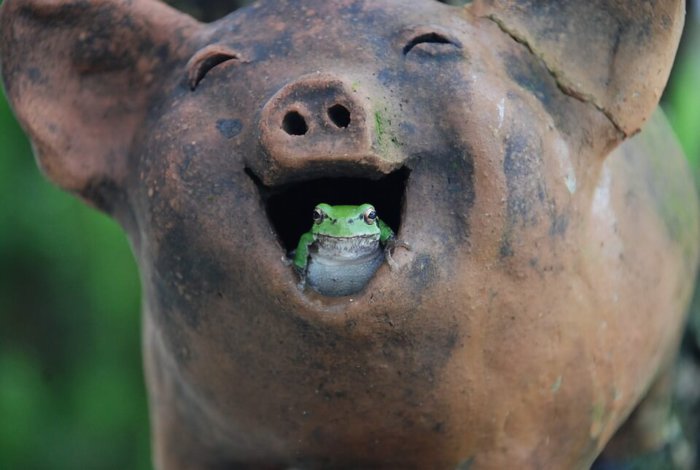
Pigs love to eat frogs
Concentrates are introduced into the diet, strictly dosing. A month before the planned slaughter of livestock, their daily rate per head is increased to 300 g. This type of pig is extremely prone to obesity, so it is not recommended to exceed this rate. The rest of the time, grain is used only as top dressing, mixed with other types of feed.
Attention! Be sure to ensure that the animal’s food has a sufficient amount of minerals. To do this, small amounts of clay, bone, fish and meat and bone meal, as well as chalk are introduced into the diet.
Breeding of the Hungarian mangalica
In Hungarian shaggy pigs, puberty occurs around the 12th month of life. It is at this age that the body of the animal is fully formed for mating and giving birth to offspring. In the first farrowing, the female, as a rule, does not bring more than 6 cubs. Later, as the sow matures, the number of babies increases to 10, less often 12. It is worth noting that initially the entire offspring is born striped, which makes the piglets very similar to wild relatives. And only after a certain period of time they acquire the proper color.
The whole process of farrowing a sow and caring for newborn piglets consists in such moments:
- Shortly before farrowing, the pregnant female Mangalitsa is transferred to a specially designated dry room with an elevated temperature.
- After the birth of the baby, the umbilical cord is carefully cut, and the incision site is immediately treated with an iodine solution.
- Then the babies are quickly wiped off the liquid and returned to the mother.
- After the birth of the last piglet, the floor of the room in which the family is kept is carefully swept and the litter is removed, replacing it with a new one.
- From the very first days, piglets are given injections of preparations with a high iron content.
- Fried concentrates and mash are introduced into the diet of babies from the 5th day of life.
- Weaning of young animals is carried out immediately after the characteristic stripes disappear.
Advantages and disadvantages of the breed
Like any other breed line, the Hungarian Mangalica has an individual set of advantages and disadvantages. The main advantages of the variety include:
- ease of care and maintenance of animals;
- undemanding in terms of feed;
- strong immunity to diseases characteristic of other breeds of pigs;
- high-quality meat, characterized by special marbling and taste;
- endurance and high resistance to bad weather conditions;
- calm character.

Pig mangalica
The disadvantages should be highlighted:
- high cost;
- prolonged puberty in females.
Hungarian mangalica, despite the high cost, will be a profitable and valuable acquisition for any farm. Such an animal is able to please the owner not only with a colorful appearance, but also with high-quality meat and lard products, the popularity of which is growing again. But before buying a livestock, you should carefully familiarize yourself with the features of its cultivation.
